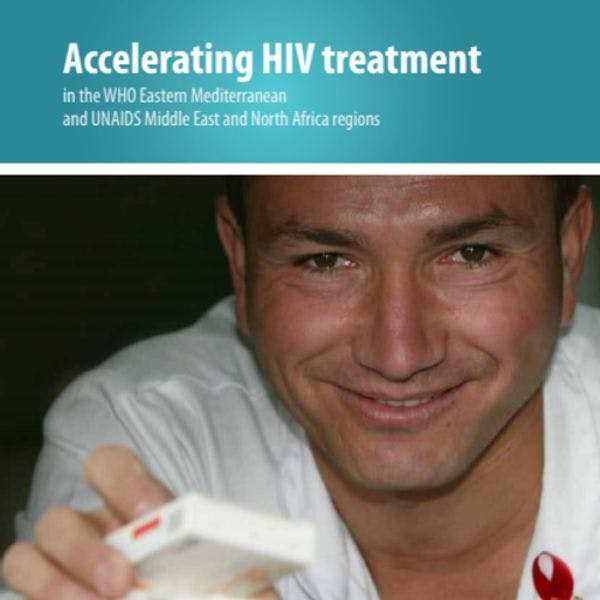Accelerating HIV treatment in the WHO Eastern Mediterranean and UNAIDS Middle East and North Africa regions
Antiretroviral therapy has transformed the global HIV response, but whether people living with HIV benefit from the life-saving and prevention benefits of treatment depends too often on where they live. Worldwide, HIV treatment coverage is lowest in the WHO Eastern Mediterranean Region and UNAIDS Middle East and North Africa Region (referred to in this report as the “Region”), and does not exceed 15% of the estimated people in need of treatment. The situation in the Region is critical and we are not keeping up with the global pace of treatment access – the rate of growth in treatment coverage is lower in the Region than it is globally and this disparity is increasing over time.
This needs to change. Not only do people living with HIV have the same rights to treatment as their peers in other parts of the world, but antiretroviral treatment prevents new infections. Even as the global community celebrates the decline in new infections worldwide, the Region is one of two in the world where new HIV infections are still on the rise.
The WHO and UNAIDS report outlines what needs to be done to close the gap and move towards universal access to treatment. We need to ensure that policies reflect recent advances in science emphasizing the
importance of earlier testing and treatment, particularly for key populations. Putting the Region on track to reach universal access will require intensified focus on the geographical settings and populations where both HIV prevalence and unmet needs for testing and treatment services are highest.
Keep up-to-date with drug policy developments by subscribing to the IDPC Monthly Alert.
Downloads
Regions
Related Profiles
- Joint United Nations Programme on HIV and AIDS (UNAIDS)
- World Health Organization (WHO)
